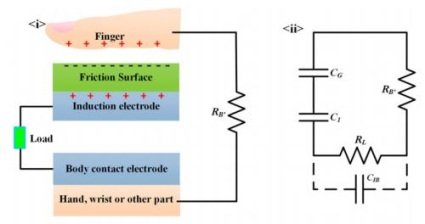Researchers have developed a technology that uses the human body in place of a ground electrode to power portable gadgets sans battery.

“At present, the generator is more suitable for low-power devices,” said Haixia Zhang, a professor at Peking University and coauthor of a paper describing the technology’s development, told Phys.org. “In our future plans, we hope it can be used as a back-up power source for portable electronics.”
For the record, the technology’s full name is a single-friction-surface triboelectric generator, or STEG for short. It’s based on the triboelectric effect, which refers to two materials becoming electrical charged when they rub against each other (think sock and carpet).
Basically, the way the group’s technology works is that a device that incorporates a STEG covering can produce an electric charge from something as simple as a finger tap. The group described in their paper how they covered the panel of a mobile phone with a flexible, transparent layer of STEG composite material. The electrode — in this case, the palm of the user’s hand and his / her fingers — was located on either back side of the border of the phone in order to complete the electric connection.

With this setup, the group was able to demonstrate that by patting the phone within the palm of their hands, or tapping it with their fingers, caused electrons to be exchanged between the human skin and the STEG material. Following a series of pats / taps, electric charges moved back and forth between the induction electrode and charged skin.

While the triboelectric effect is fairly well understood, one of the stumbling blocks in the way of its advancement was the design of a generator that can achieve good performance. In a bit of a surprise discovery, the group found that when the grounded electrode was replaced in the STEG with a human body electrode, the technology achieved an increase in both the output current and the amount of charge transferred.
The STEG has application possibilities with low-power portable electronics and wearable devices, including implanted and medical devices / sensors. The researchers hope to advance the performance of their STEG technology so that this can be realized sooner rather than later.
“For the STEG devices, we are making efforts to improve the output of the STEG device, attempting to use new materials and fabrication methods,” Zhang explained. “The advantage of the human body as a good conductor will be taken to develop several novel triboelectric generator devices as well.”
The group’s work was published in a recent issue of Applied Physics Letters . It is available for download.
Story via phys.org
Advertisement
Learn more about Electronic Products Magazine





